
A re you looking for the latest blogging statistics and trends?
Keeping up with the most recent figures from this list of blogging statistics can help you identify gaps in your blogging strategy and give you fresh ideas to try.
In these statistics about blogging, you’ll discover what type of content to include and how often to publish blog posts to rank higher and increase organic traffic when you start a blog.
In This Guide:
These are all the top blogging statistics you need to know in 2024, so let’s get started!
General Blogging Industry Statistics
First of all, let’s look at some general blogging statistics and facts.
How many blogs exist today?
There are over 1.9 billion websites today. And it’s estimated that there are over 600 million blogs on the internet.
The blogging statistics show that over 43% of all websites, including numerous business websites, use WordPress blogging platform as their content management system, making it the best blogging platform available. In fact, the blogging platform statistics indicate that WordPress remains the fastest-growing of blogging sites.
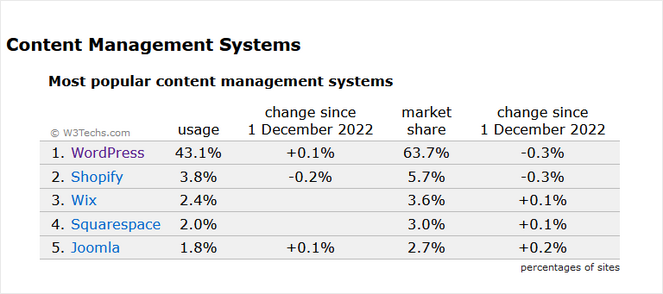
Related: Learn how to install WordPress in easy steps.
How many people are blogging?
According to Statista, the number of bloggers in the United States reached around 31.7 million users in 2020.
ConvertKit found that 69% of bloggers, representing a significant percentage of blogs, were in the 25-44 age range, and 23% were 45 or older.
How many blog posts are written every day?
In 2024, 7.5 million blog posts are published per day.
Want to see the live data? Head over to Internet Live Stats to see how many blog posts have been written today.
Bloggers using the WordPress.com platform produce about 70 million new blog posts and receive 77 million new comments each month.
Artificial Intelligence (AI) Blogging Stats
One of the biggest trends over the past couple of years is the proliferation of AI in the assistance of content creation.
In fact, an estimated 65% of bloggers use AI in some capacity.
And this is for varying use cases, as was shown in a study by Siege Media and Wynter – including:
- Content ideation (71%),
- Content development (68%),
- Drafting content (47%),
- And even strategy (40%)
That same study also found that the use of AI has jumped from 64.7% in 2023 to 83.2% in 2024 – with B2C industries showing the biggest jump from 38% to 87%.
But, AI is certainly not only being used by independent bloggers and content marketers.
A study by Gartner showed that 63% of marketing leaders intend to invest in Generative AI to assist in their marketing needs.
This rise in interest is certainly for cost savings and cost optimization.
Although even Google has been ambiguous about its feelings towards AI-created content, maintaining that it simply wants quality regardless of where it comes from, the results of AI vs. human-created content show humans winning.
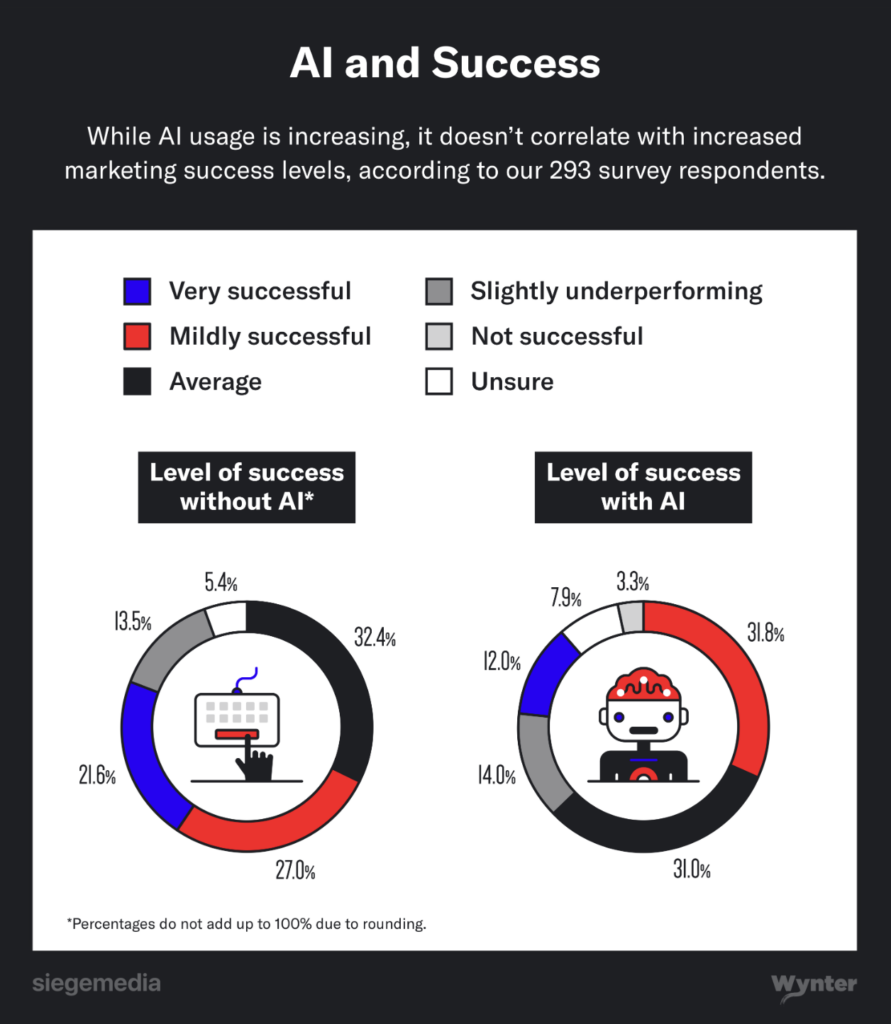
It’ll certainly be interested to keep an eye on the trends and stats to see any changes over time!
Blogging Duration Stats
How much time do bloggers spend writing their blog posts?
The Orbit Media Annual Blogging Survey reckons that, on average, bloggers take 3 hours 51 minutes to write a blog post:
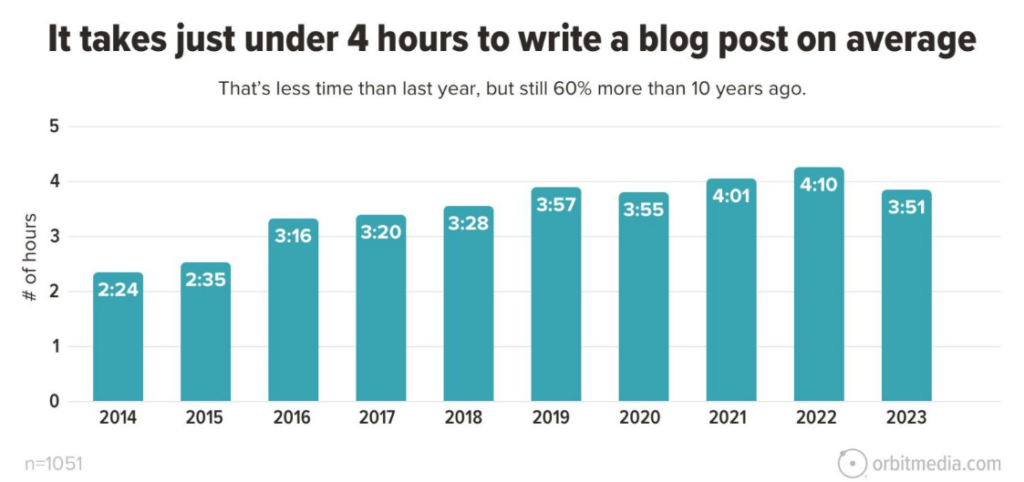
Over the past 10 years, the length of time for the blogging process has increased by 60% from 2 hours 24 minutes in 2014.
Interestingly, bloggers who invest more time per blog post are more likely to report “strong results” than those who don’t:
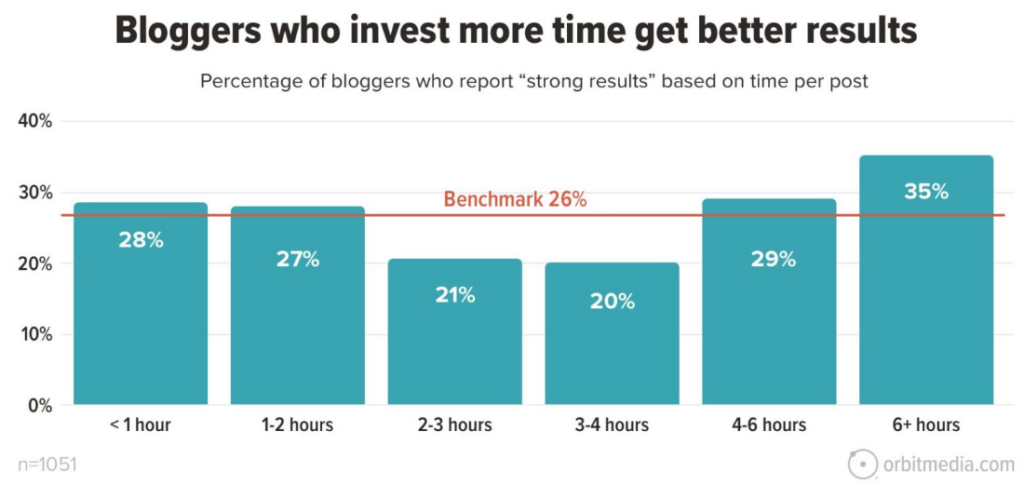
Note: 26% of bloggers reported “strong results,” so that’s the benchmark.
Blogging Word Count Stats
Bloggers always want to know how many words they should use in their blog posts.
How long is the average blog post length?
The average blog post is now 1,427 words, a 77% increase in blog post length since 2014:
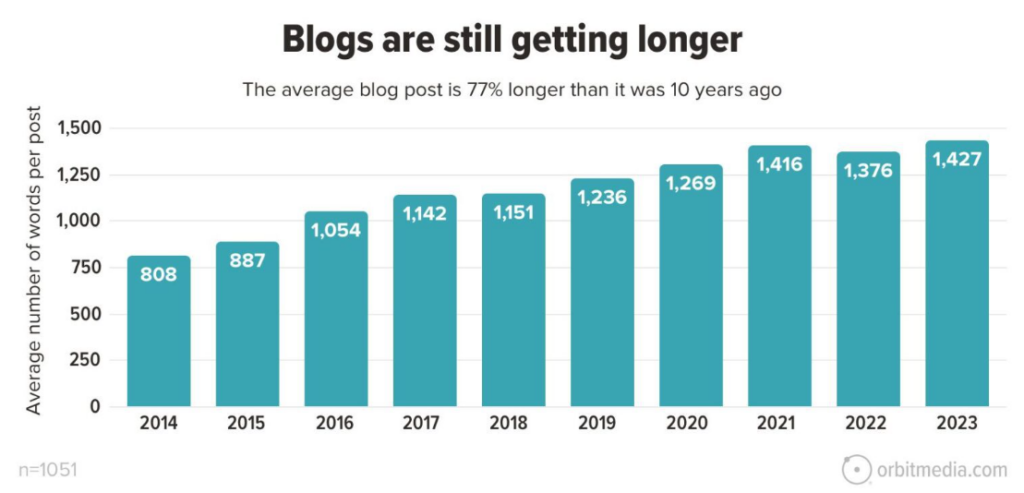
Given that the vast majority of bloggers are spending more time writing blog posts, it’s no surprise that blog posts are getting longer.
There’s a clear link between article length and success. Longer blog posts often lead to better results. This trend has consistently shown up in the study year after year:
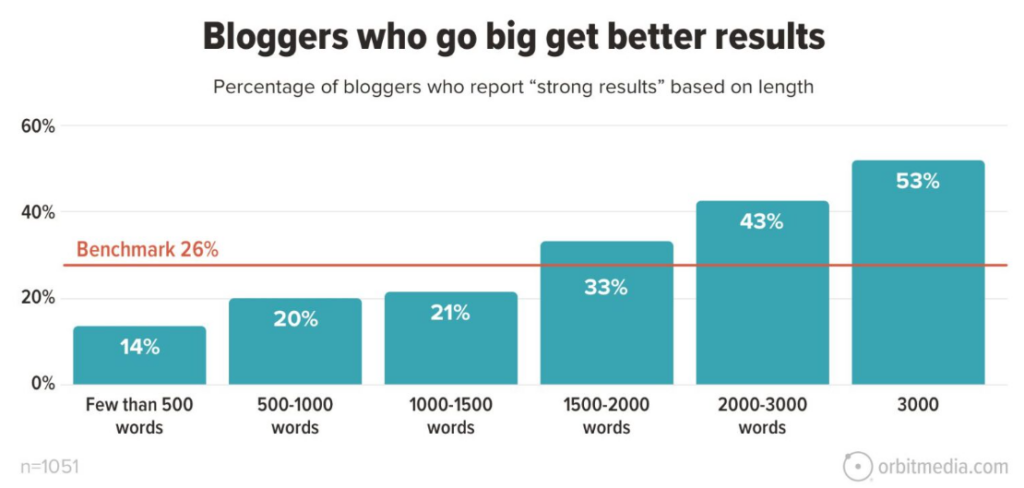
Other studies have shown a strong correlation between long-form content and higher rankings.
Backlinko found the average word count of a top-ranked post in Google is 1,890 words:
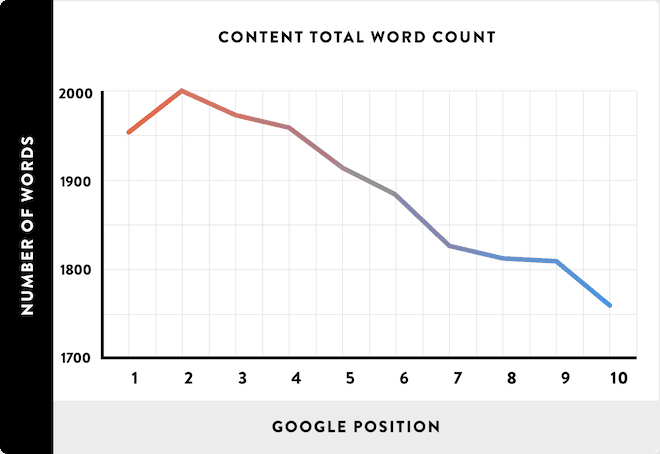
HubSpot’s analysis of their blog posts showed articles with a word count between 2,250 and 2,500 earned the most organic traffic:
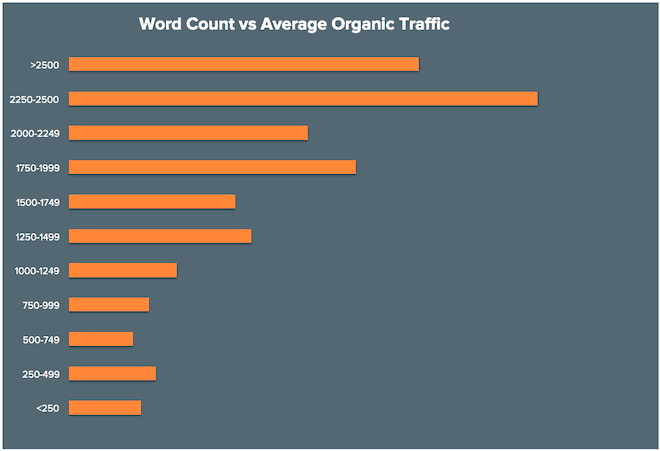
Pro Tip: Remember, these figures are average word counts. While it’s clear to see that longer blog posts get better results, don’t lose sight of quality. We created a full guide on how long your blog posts should be and found it better to have a shorter blog post packed full of useful content than a long blog post full of meaningless words.
Blogging Frequency Stats
A common question many bloggers (both old and new) have is:
How many blog posts should I publish a month?
The latest trends show that bloggers don’t publish posts as often as they used to. Whereas they used to publish maybe a couple of blog posts per week, they now publish several times a month.
Again, there’s a correlation between the number of blogs regularly posted and the length of blog posts. Longer blog posts take longer to write, so bloggers can’t publish the same number of blog posts as before.
However, the Orbit Media survey revealed that bloggers who do publish daily are more likely to report “stronger results” than bloggers who publish several times per month:
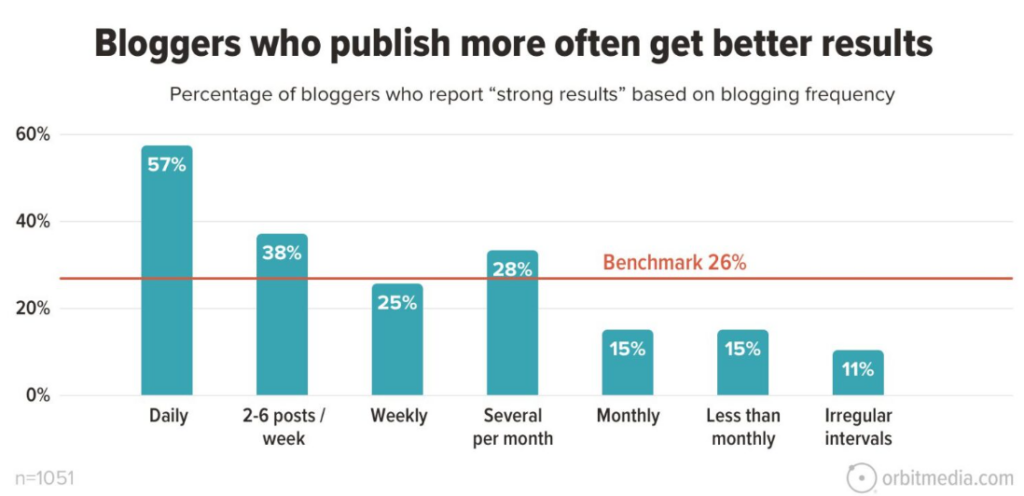
Further statistics from HubSpot show companies who prioritize blogging and publish more blog posts get more traffic and leads.
And it’s safe to say that publishing more content can help speed up the amount of time it takes to monetize a blog.
- Companies that publish 16+ blog posts per month get nearly 3.5X more traffic than those that publish 0-4 monthly:
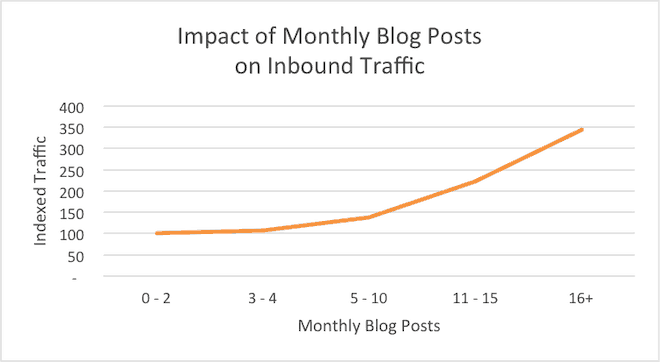
- Companies that published 16+ blog posts per month received about 4.5X more leads than companies that published between 0-4 monthly:
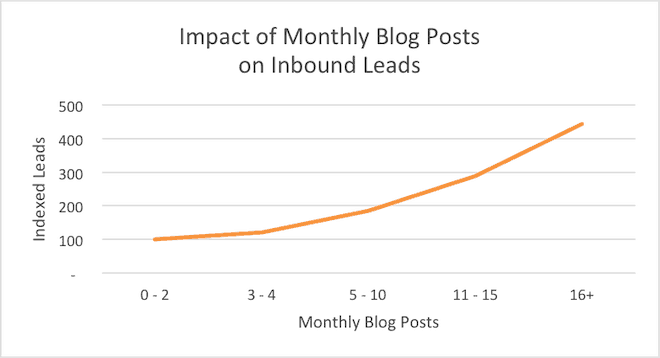
Pro Tip: If you can write longer quality posts and publish them frequently, you can expect more success with your blog, even without taking other forms of blog promotion into account.
Blogging Content Statistics
We’ve seen that blog posts are getting longer, but which type of content works best?
Orbit Media survey results found “How-to articles” are the most published content format based on the number of blogs created:
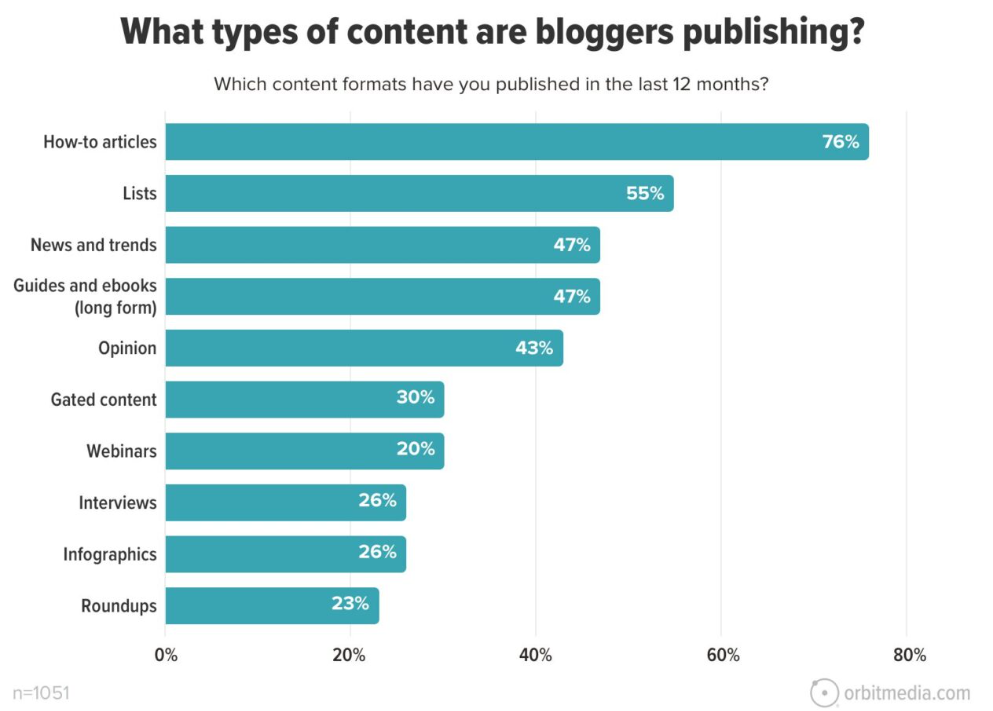
But, when it comes to what works best, there’s a different picture:
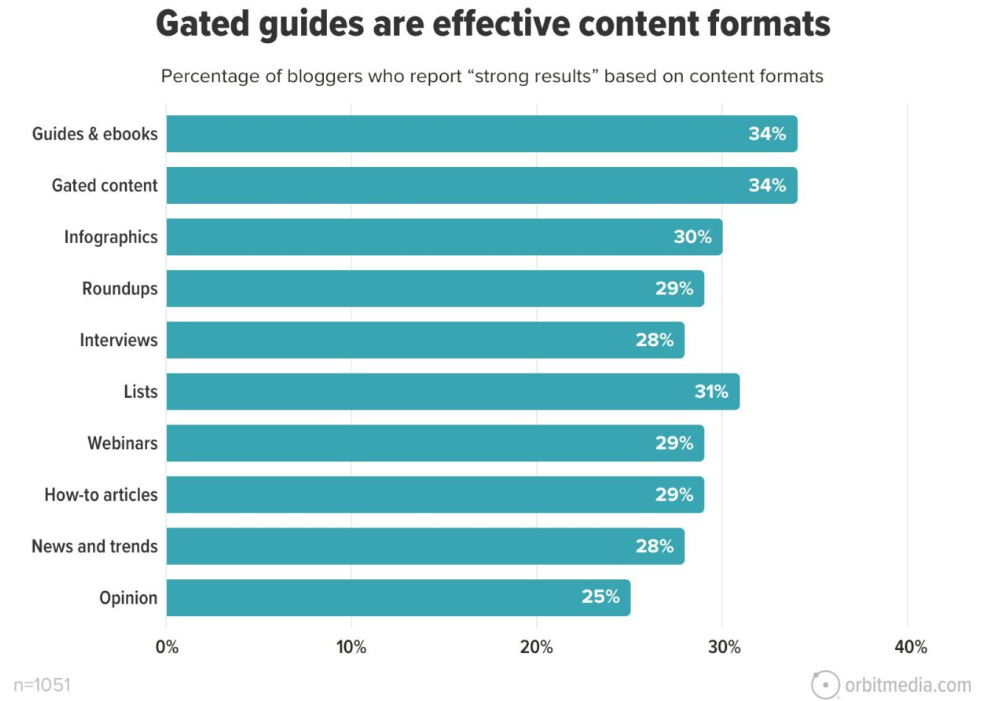
Leading the way are guides, ebooks, lists, and infographics.
Website visitors who read blog posts love visuals (videos, images, graphs, and stats) as they break up the text and back up the points you’re making.
Blogging is no longer just about writing; adding these elements to your blog posts will improve results. The vast majority of blogs now incorporate multimedia content to engage readers and enhance the overall experience.
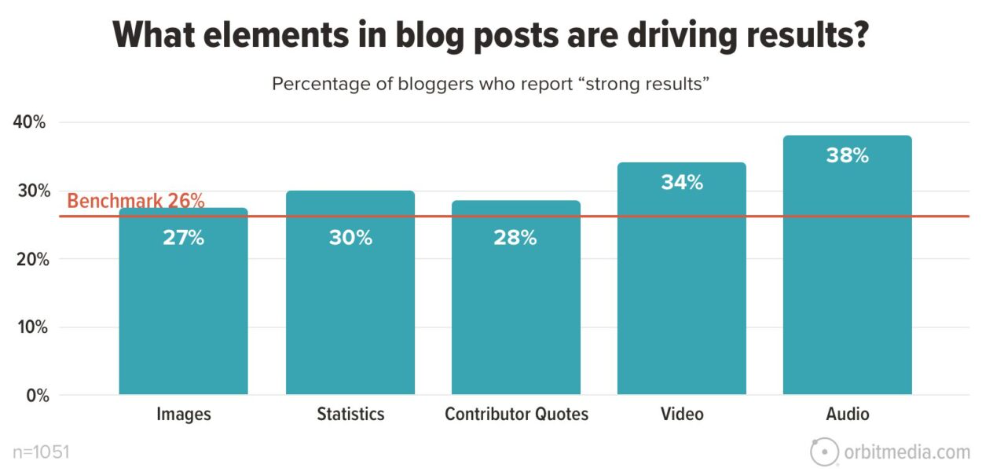
Further stats from HubSpot confirm this:
- Listicles are the most popular blog post format among business blogs.
- Using statistics in blog posts improves consumer trust.
- 36% of people prefer list-based headlines.
And, OptinMonster also has some supporting visual and video stats:
- Articles with images get 94% more views as opposed to those with no visuals.
- 71% of bloggers report using visuals as part of their marketing strategy.
- 19% of bloggers are now including video in their typical blog posts.
Pro Tip: Make sure you have the right content mix in your blog posts.
Blogging SEO Statistics
We already touched on some SEO stats, but here’s a few more:
Having a blog on your website significantly increases your chances of ranking higher in search by 434%.
HubSpot found their blog posts with over 2,500 words earned the most links:
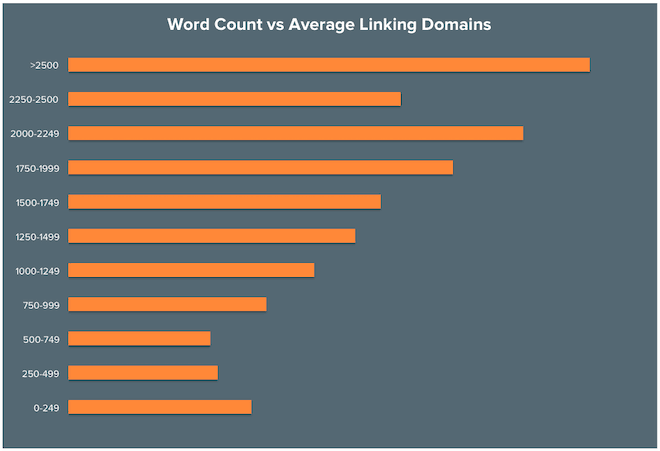
And Backlinko found that the number of domains pointing to a particular page (as well as your overall site) correlated in higher rankings:
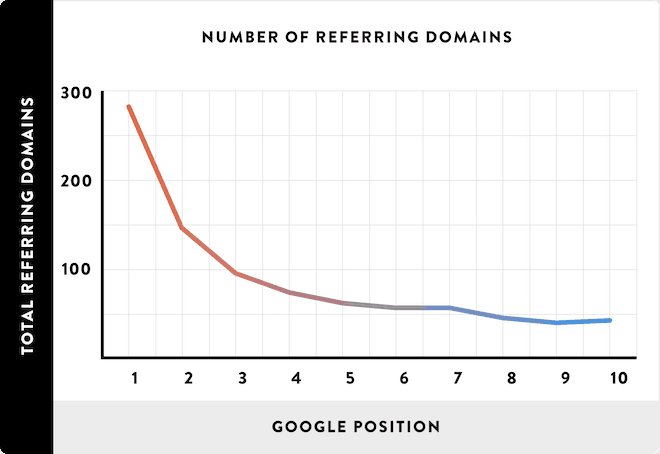
Takeaway: Writing longer blog posts attracts more links. And it’s better to get 10 links from 10 different sites than 10 links from the same domain if you want to rank higher.
Data from AWR shows that almost half of all clicks on the SERPs (search engine results pages) go to the top 3 listings:
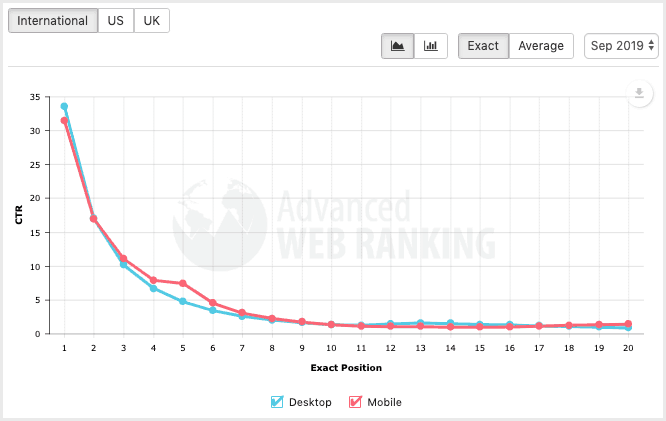
Note: This chart shows the organic click-through rates – desktop (blue) and mobile (red) – for searches coming from 11,762,160 keywords for 108,664 websites in September 2019.
Given this data, it’s clear that not only does writing longer blog posts benefit SEO, but encouraging website visitors to read blogs on your site can also boost engagement. By crafting comprehensive and insightful content as part of your content marketing strategy, you increase the likelihood that visitors will spend more time on your site and click through to other pages, thereby enhancing your site’s authority and ranking in organic search.
Blogging Traffic Stats
Does blogging drive traffic to your website?
According to Traffic Generation Cafe, once you publish 24-51 blog posts, blog traffic increases by up to 30%:
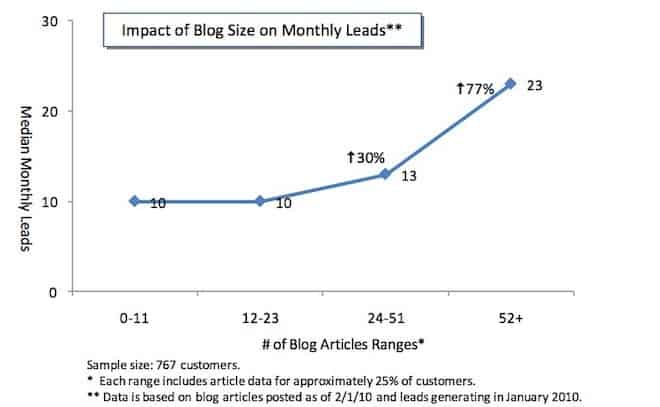
And once you go past 51 blog posts, you can expect a further traffic increase up to 77%.
Publishing quality content consistently helps Google understand what your blog is about, plus readers have a reason to return to your site.
Further research from HubSpot identified what they call “compounding” blog posts, meaning posts whose traffic grows steadily over time:
- 1 in 10 blog posts are compounding.
- 1 compounding blog post generates as much traffic as 6 regular posts combined.
- Compounding blog posts generate 38% of all blog traffic.
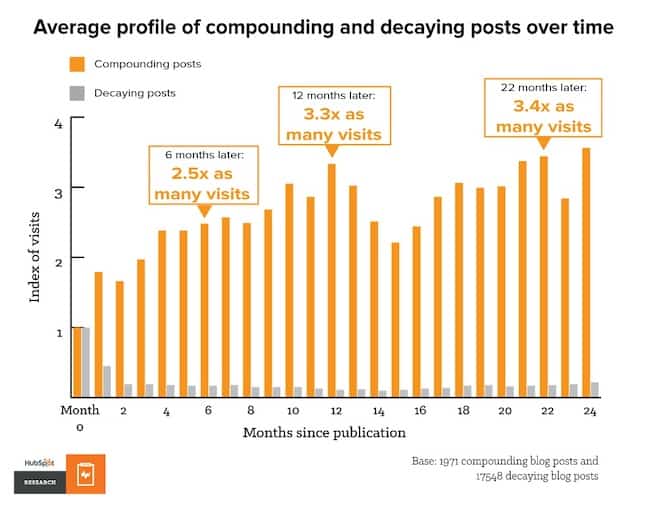
Blog post titles with 6-13 words attract the highest and most consistent amount of traffic.
Guest Blogging Stats
Bloggers should make guest blogging a part of their traffic-generating activities to promote their content.
Here are some stats from OptinMonster:
- 60% of bloggers write 1-5 guest posts per month.
- 3% of bloggers write over 100 guest posts per month.
- Only 6% of bloggers publish the majority of their original content as guest posts.
- 79% of editors say guest content is too promotional.
- Guest content is in higher demand in the summer months of June, July, and August.
Incorporating guest blogging into your business blogging strategy can significantly enhance your reach and readership.
Blogging Engagement Stats
We’ve seen how blogging improves traffic and rankings, but how do readers rate blog posts?
Readers use blog posts to inform purchasing decisions:
- 60% of people purchase a product after reading a blog post about it.
- 47% of buyers consume three to five pieces of content before making a purchase decision.
Readers prefer organic content like blog posts to sponsored posts:
- 70-80% of searchers ignore sponsored posts in favor of organic content.
- 200 million people installed ad blockers on their computers in 2015.
- Ad blocking in the US has increased from 15%-30% in the last four years.
Readers scan blog posts:
- 73% of visitors skim rather than read the blog post thoroughly – be sure to check out our guide on blog design layouts.
- The average reader only spends 37 seconds reading an article or blog post.
Readers trust and share blog content:
- Blogs have been rated as the 5th most trusted source for accurate online information.
- Blog posts are among the most shared content online.
Blogging Trends for 2024 and Beyond
As you can see from this ultimate list of blogging statistics for 2024, the state of blogging is still very much alive and relevant today.
Content marketers say that readers want and trust blog content, making it a powerful tool for lead generation. As bloggers, it’s our job to deliver the best possible content to answer their questions.
Your content needs to be both entertaining and informative. And as blog posts get longer, you need to include more visuals and videos to make your blog posts more engaging.
I hope these blogging stats were useful for helping with your blogging efforts. Before you go, why not check out some of our guides to help you start or improve your blog:
- How to Start a Blog – The Definitive Guide
- The Ultimate Blog Post Checklist
- How to Get Traffic to Your Blog
- Ultimate SEO Guide for Bloggers
And as always, if you have any questions, leave them in the comments below.


0 Comments
Join in. The comments are closed after 30 days.